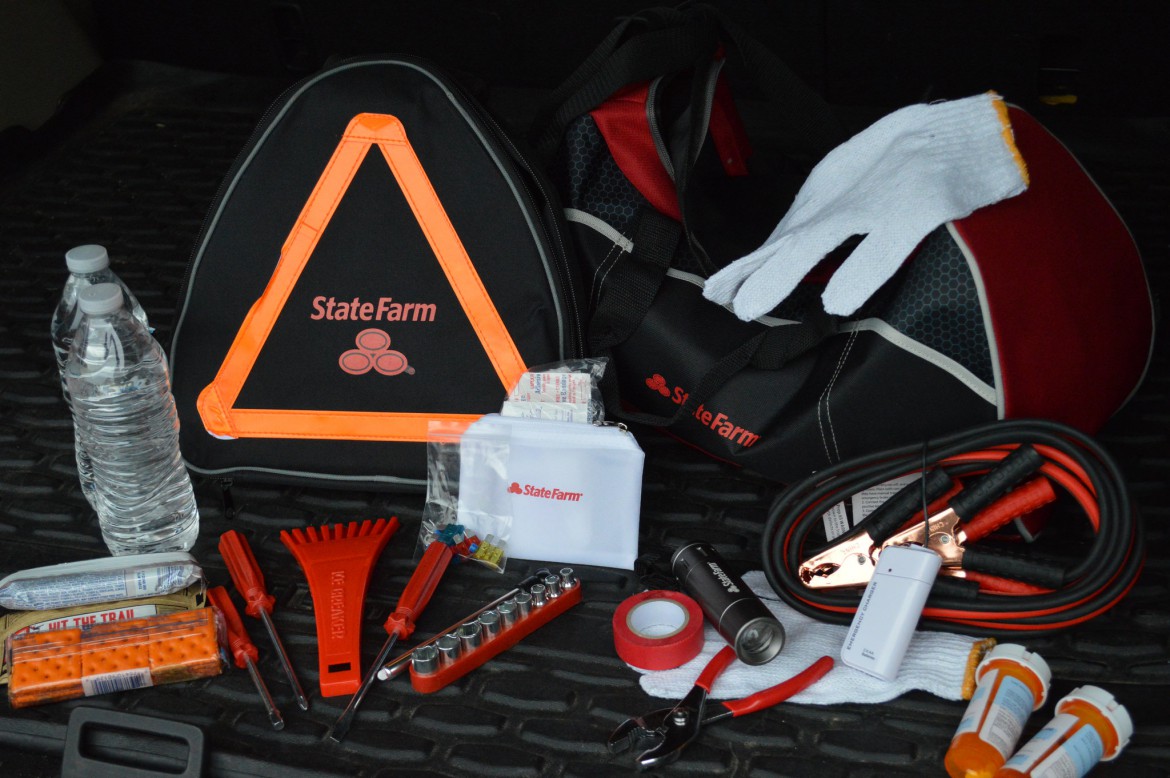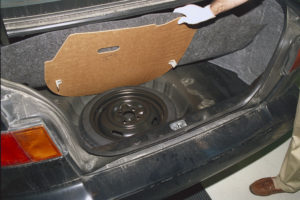According to Brian: Are You prepared?

State Farm once asked 3,000 random Americans what things they drove around with in the trunk of their vehicle. The answers were entertaining and revealing: 60 watermelons, an astronaut suit, 100 VCRs, bagpipes and a gorilla suit were all included on the list.
Most people that were spoken to readily admit they don’t have what we recommend every driver has, including an updated emergency or winter driving kit.
 It’s not yet spring, so there’s plenty of opportunity for Mother Nature to dole out a heavy hand. And it could come when you least expect it. Some of you might remember the January 2014 snow and ice event that crippled the city of Atlanta and trapped thousands of motorists overnight…in Georgia of all places! I have a friend who was caught in that mess, and it wasn’t fun listening to the ordeal he went through. Regardless of where you live, now’s a good time for a trunk transformation.
It’s not yet spring, so there’s plenty of opportunity for Mother Nature to dole out a heavy hand. And it could come when you least expect it. Some of you might remember the January 2014 snow and ice event that crippled the city of Atlanta and trapped thousands of motorists overnight…in Georgia of all places! I have a friend who was caught in that mess, and it wasn’t fun listening to the ordeal he went through. Regardless of where you live, now’s a good time for a trunk transformation.
I’ve outlined a few things you should consider having in your vehicle in advance to help with the unexpected. The first thing to remember is to have a good case or bag to store everything in one central location. That way, you won’t have items flying around your vehicle or getting lost. You should also check your kit a couple of times a year as batteries can discharge and medications can expire. Take the time to get the junk out of your vehicle trunk and load in these important items:
- Hazard triangle (with reflectors) or road flares

- First aid kit
- Jumper cables or small battery charger
- Windshield scraper and brush
- Spare tire (make sure jack and lug wrench are in vehicle)
- Tow strap
- Blankets and extra warm clothing
- Cell phone and charger
- Road salt or cat litter to help with tire traction
- Brightly colored flag or “Help” sign
- Flashlight (with working batteries), matches or lighter
- Tarp for sitting or kneeling in the snow for exterior work such as a tire change
- Small tool kit
- Duct tape for temporary fixes
- High-calorie, non-perishable food
- Water
- Crucial medications
You also want to make sure your vehicle itself is ready to take on the roads. Check the condition of your windshield wiper blades, use winter windshield washer fluid (rated not to freeze at 0 degrees) and check tire inflation. As temperatures fall, tire air pressure can drop by as much as one pound per square inch for every 10-degree dip.
These are just a few things that can give you peace of mind as you head out the door and onto our roads and highways.
For more information on how you can manage the risks of everyday life, contact State Farm Agent Brian Hazelrigg at 573-445-1687, email him at [email protected] or visit his website at www.brianhazelrigg.com.
